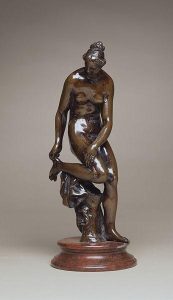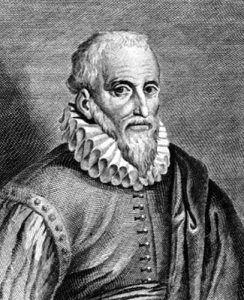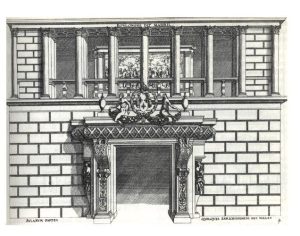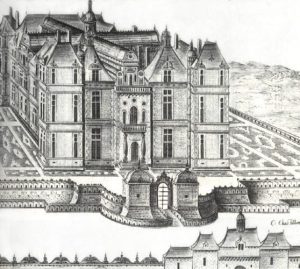First commissions, from the Duke of Savoy
Barthélémy Prieur was born in 1536 at Berzieux in the Champagne region, currently the department of Marne, into a peasant family. He may have trained in the Netherlands, but then went to Italy, to Turin where he worked from 1564 to 1568 for Duke Emmanuel-Philibert of Savoy. He had probably stayed in Rome, Florence and maybe Milan before.
Back to France
His artistic output went in several directions. On the one hand he worked on a range of pieces, mainly sepulchral monuments. On the other hand he brought to France the production of small bronzes, an Italian idea.
- Sepulchral monuments
In 1571 the sculptor was in Paris and, under the architect Jean Bullant, made two of the Virtues on the Monument to the heart of Anne de Montmorency, High Constable of France. This monument is now exhibited at the Louvre Museum. The two worked together again on the tomb of the High Constable and his wife erected after 1676 in the church of Saint-Martin de Montmorency. The two recumbent figures, removed from the monument during the Revolution, can now be seen at the Louvre. In 1585 he was asked to make the monument for Christophe de Thou. The torso, the allegories and the spirits were saved from destruction during the Revolution and can now be seen at the Louvre. The beginning of the 17th century saw the kneeling figure representing Marie de Barbançon-Cani the first wife of President Jacques-Auguste de Thou, son of, Christophe, for their sepulchral monument. The effigy, now kept at the Louvre, shows a very classical approach in the carving and expression of the model.
- Small bronzes
Besides great sepulchral monuments and being part of royal enterprises, which led (in 1591) to his being appointed sculptor to the King, Barthélémy Prieur also introduced and developed in France the craft of making small bronzes. Multiple copies were produced with the considerable help of his son-in-law, Guillaume Dupré. The subjects were varied, as shown by the inventory done after he died. Statuettes featuring Venus, heads of Scipio and Marcus-Aurelius, together with various animals, some lamps and effigies of sovereigns, sometimes in allegorical disguise, such as bronzes of Henri IV and Marie de Médecis as Jove and Juno (at the Louvre museum).
A Protestant who maintained close links with his roots
The circumstances of Barthélémy Prieur’s becoming a Protestant are not known. Was he born into a Protestant family ? Did he convert on his own ? Both his weddings were celebrated in the Reformed tradition. His first wife, Marguerite, was a Parisian goldsmith’s daughter. After being widowed, he married Rachel Thiboust, herself the widow of an agricultural labourer.
In 1575 he left Paris and took refuge in Sedan for the first time, and went there again in 1585. He stayed until 1591, when he was appointed sculptor to the King.
In Paris he lived on the rue Garancière, in the Saint-Germain des Prés area, where many Protestants lived. It was nicknamed “le petit Genève” (little Geneva). He met the Du Cerceaus and Bernard Palissy, whose classes he attended along with Ambroise Paré. In his library there were numerous religious books such as a Geneva Bible, Calvin’s Les Commentaires, some sermons and discussions – which betray his interest in the Reformed faith.
His son Théodore was baptised in Sedan in 1586, and was also a sculptor who also lived in the Saint-Germain des Prés area. Another son, Paul, went into exile in Geneva where he was a jewellery tradesman after his apprenticeship in Paris with a lapidary. Guillaume Dupré, his son-in-law and assistant, continued his work after his death in 1611. Barthélémy Prieur was buried in the Protestant cemetery of Saint-Germain.





